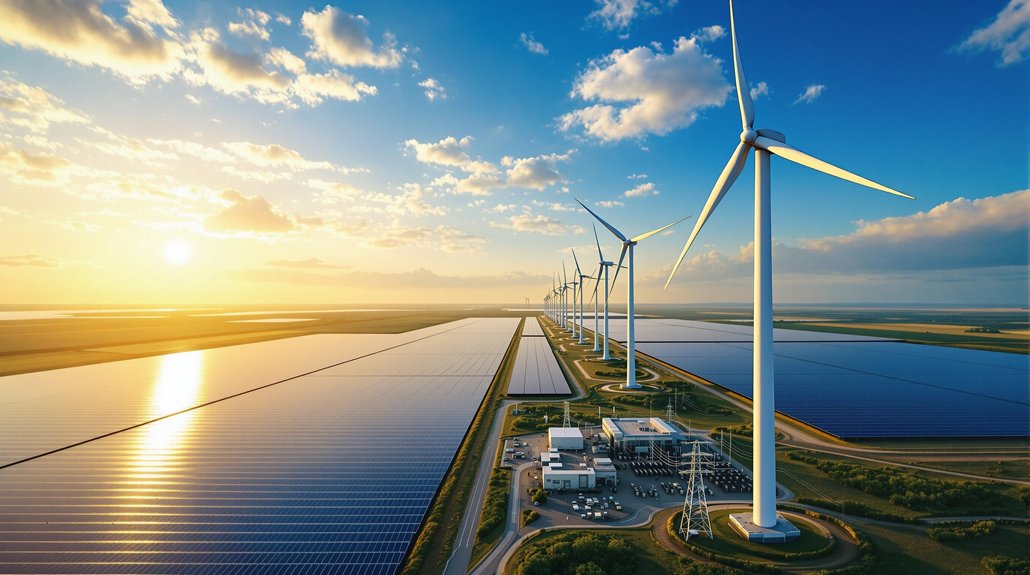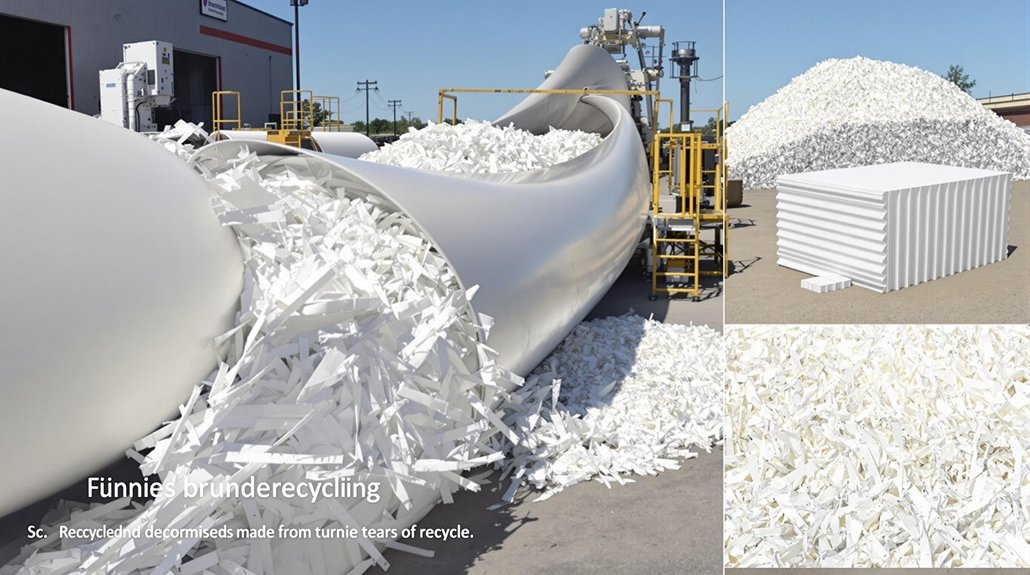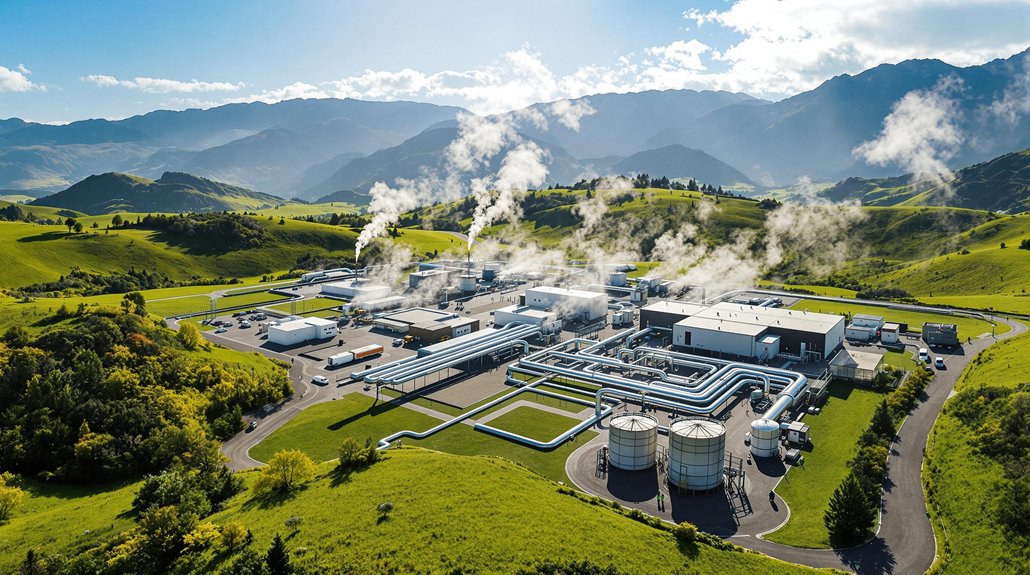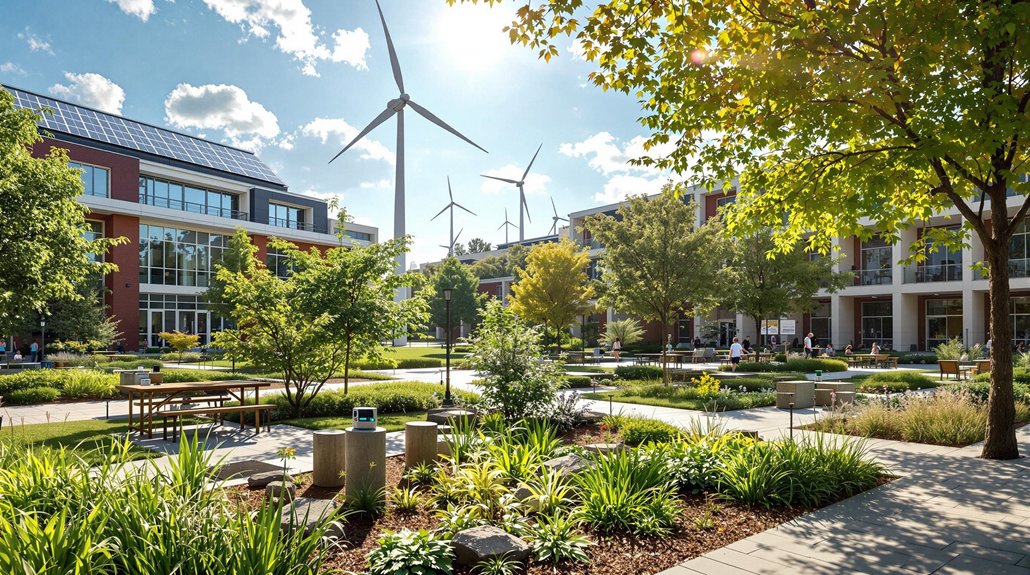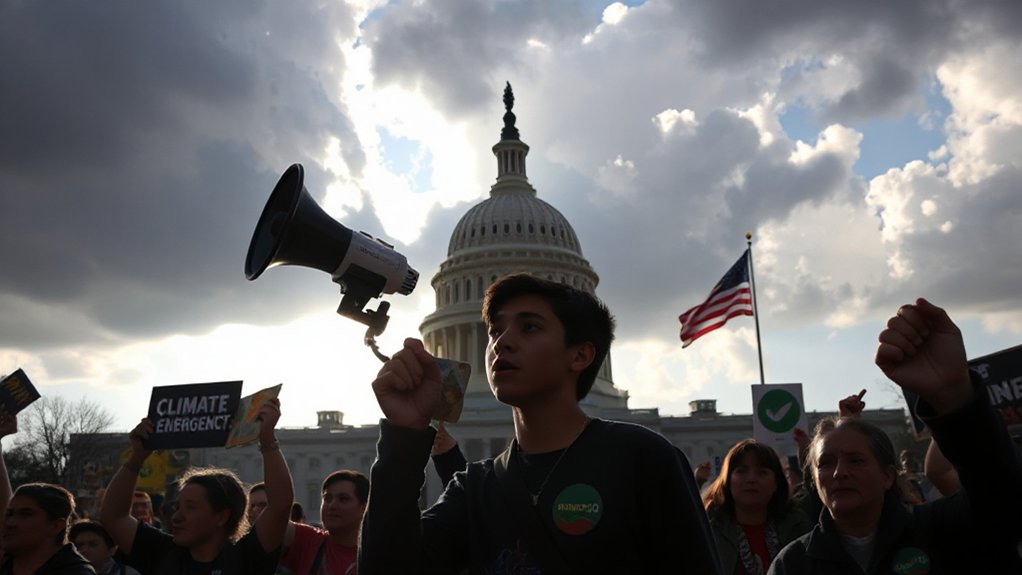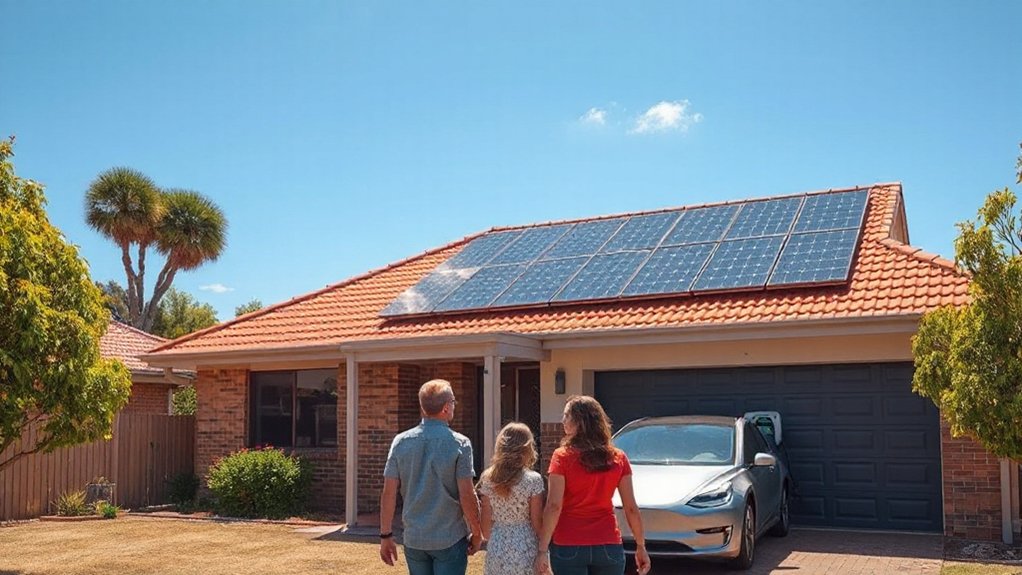NextEra Energy leads the green power sector as the world’s largest wind and solar producer with 58,000 megawatts of capacity. Berkshire Hathaway Energy operates 31,000 megawatts across six countries, while Invenergy has developed 13,800 megawatts of projects globally. Other major players include Ørsted, Duke Energy, Cypress Creek Renewables, and EDF Renewables. These companies are investing billions in clean infrastructure and creating thousands of jobs. Their ambitious goals show the industry’s rapid transformation.
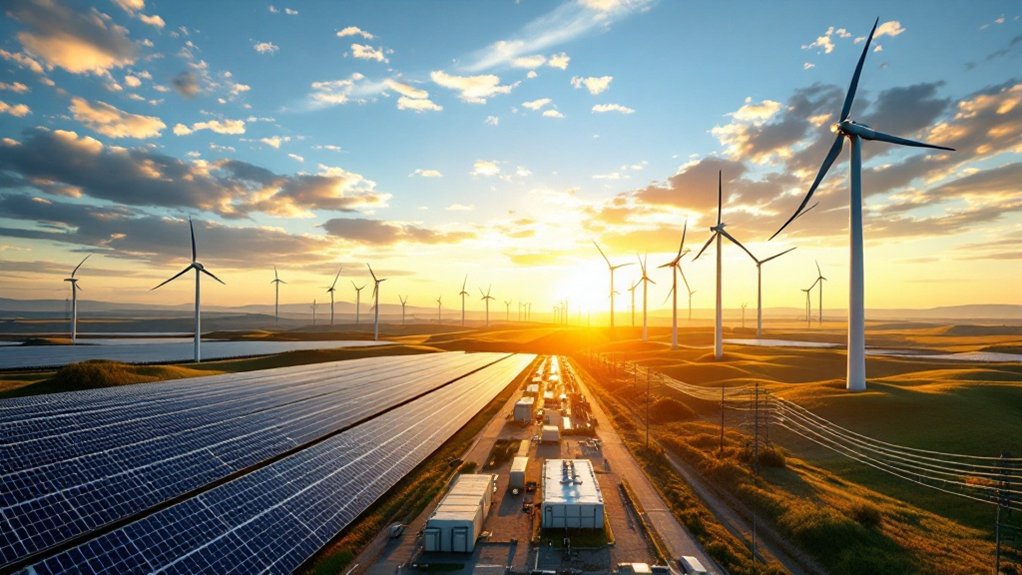
Several major companies are leading the charge in sustainable energy across the globe. As countries work to reduce carbon emissions, these firms are investing billions in clean energy infrastructure and developing ambitious goals for a greener future.
NextEra Energy stands at the forefront as the world’s largest producer of wind and solar energy. With 58,000 megawatts of generating capacity and 15,000 employees across North America, NextEra has invested $50 billion in clean energy infrastructure from 2019 to 2022. The company aims to achieve net-zero emissions by 2045. This investment contributes to economic stability through decreased reliance on volatile fossil fuel markets.
Leading the global renewable revolution, NextEra Energy powers the future with unmatched wind and solar capacity across North America.
Berkshire Hathaway Energy is another powerhouse with 31,000 megawatts of renewable energy capacity. Operating in 18 U.S. states and six countries, it manages $108 billion in assets with $20.9 billion in annual revenue. The company plans to invest $3.9 billion in wind and solar projects between 2021 and 2023, working toward providing 100% renewable energy to its customers.
Invenergy has developed 13,800 megawatts of renewable projects across four continents and nine countries. With over 1,000 employees globally and $43 billion in project investments, Invenergy is responsible for developing the world’s largest solar project in Texas, generating 1,310 megawatts of clean energy. The company helps commercial clients reduce fossil fuel dependence through its 205 projects worldwide.
Cypress Creek Renewables has developed 12,000 megawatts of solar projects across 25 U.S. states. Ørsted has been recognized as the world’s most sustainable energy company and returned to the top 10 in the Corporate Knights 2025 Global 100 index. With 300+ employees, the company has invested $10 billion in solar and storage projects and aims to develop 1 gigawatt of projects annually.
Duke Energy operates 11,900 megawatts of renewable energy capacity serving 7.5 million electric customers in six states. The company plans to double its renewable energy portfolio by 2025 and achieve net-zero carbon emissions by 2050.
Recurrent Energy and EDF Renewables North America round out the top green power suppliers with 11,000 and 10,000 megawatts of renewable projects developed respectively. Both companies operate across multiple regions and have secured billions in project financing to expand clean energy capacity in the coming years.
Frequently Asked Questions
How Do Green Energy Suppliers Compare in Price to Traditional Utilities?
Green energy prices vary by region compared to traditional utilities.
While renewable options require higher upfront costs, they typically offer long-term savings.
Solar panels pay for themselves in 5-20 years, and wind energy costs just 1-2 cents per kWh after installation.
Renewable energy costs are falling 10-15% annually, while traditional electricity rates rise 2-3% yearly.
Many regions offer incentives like tax credits and net metering to offset costs.
What Certification Standards Verify a Company’s Renewable Energy Claims?
Several certification standards verify renewable energy claims.
Green-e Energy guarantees RECs aren’t double-counted and requires annual audits.
The I-REC Standard operates in over 50 countries and enables credible global claims.
EKOenergy Label verifies 100% renewable sources with additional sustainability criteria.
The Low Impact Hydropower Institute certifies facilities that meet environmental and social standards.
These certifications help consumers identify reliable renewable energy providers.
Can I Switch to Green Energy Without Installing New Equipment?
Yes, consumers can switch to green energy without any new equipment.
Many utilities offer green power programs where customers simply enroll online for a small premium.
Community solar projects allow people to subscribe to local solar farms without installing panels.
Purchasing Renewable Energy Certificates (RECs) is another option that supports clean energy generation.
These methods use the same electrical service and billing systems already in place.
How Reliable Is Green Power During Extreme Weather Events?
Green power can be reliable during extreme weather events. Renewable energy sources often continue working when traditional systems fail.
While prolonged cloudy or windless periods present challenges, diversification helps. Solar panels perform well during heat waves, and microgrids provide localized power during outages.
Smart grid technology improves response times. Energy storage and weatherization of equipment are making green power increasingly dependable when extreme weather hits.
What Percentage of Green Suppliers Use Locally-Sourced Renewable Energy?
The percentage of green suppliers using locally-sourced renewable energy varies by category.
Utility green power programs lead with 96% sourcing locally or regionally. Community solar programs are highly local, with 98% located within utility service territories.
Corporate renewable energy buyers show 65% prioritizing local sources. Green energy marketers lag behind, with 55% offering locally-sourced options.
